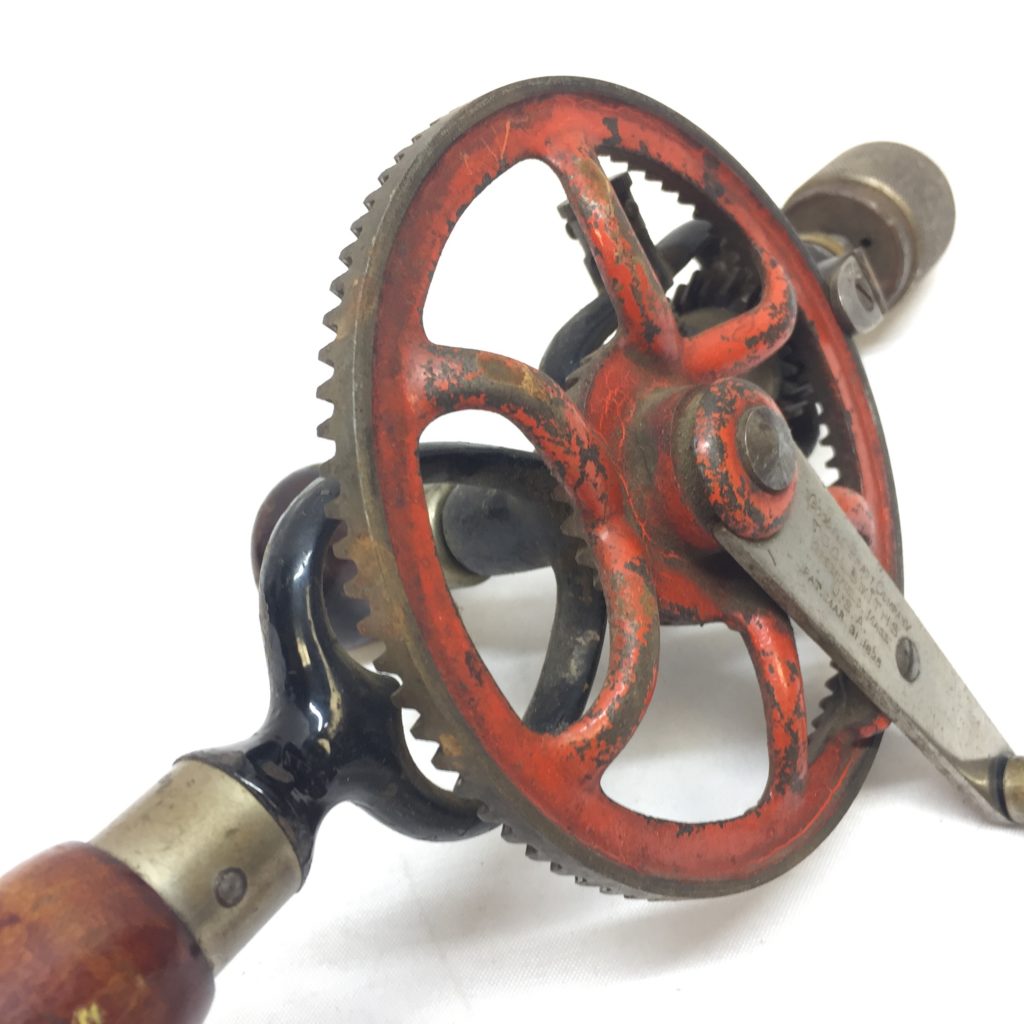

The tailstock and hand-rest rest accents were in G-P vermilion - photographs from the owner are awaited. The N4 nameplate was very close in style and size to a M-F nameplate on a vintage bench arbor, and a model 29 1/2 lathe has been seen painted in Miller's Falls grey *from the factory* the paint under the nameplate being the same grey as the body.

The current theory, despite having only a couple pieces of evidence, is compelling enough to reckon that the N4 nameplate was for units produced post-Millers Falls acquisition. No examples have yet been found of a #125 / N4. While the Mk.1 compound slide has only been seen with an "N2" nameplate, the Mk.2 has been found with types N2, N3 and N4 - this being somewhat curious, as the catalog introduction of the Mk.2 compound would place it past the N2 nameplate era, so perhaps the company were just using up old stock. However, the castings appear to have differed only in respect of the end-of-bed support being increased in diameter - though it is possible (on the evidence of a few examples) that a second tailstock variant may have been introduced at the same time, this having an alternate stud offset and the addition of an oiler hole for the acme feedscrew. He writes: Let's call the nameplates N1, N2, and N3 - and note that there were at least two bed castings used, the change perhaps taking place when the long-bed 494 was introduced. Ī recent careful study of early catalogues by the Goodell-Pratt enthusiast Michael Bishop has identified three different nameplates across the #125 bench lathe range. In comparison the 700 was a tiny machine just 12" long, the swing was 5" and the between-centres' capacity 5" this machine is dealt with in greater detail here. The 494 had a bed some 6" longer, admitted 18" between centres and was fitted with a longer and more robust T rest. It was 25" long overall, stood 11 1/2 " high on its twin feet and weighed 30 lbs. The 125 had a swing of 7", and a between-centres capacity of 12". 125 and 494 into small but useful metal-turning lathes that could hold collets, cut threads and mount a simple milling slide. had a factory built on land leased from G-P - alongside the G-P plant.Īlthough marketed as simple wood or polishing lathe, a remarkably wide range of accessories was available from Goodell-Pratt to turn the Nos. Started by Pratt in 1900, as a subsidiary of G-P to make precision tools in Greenfield, the Massachusetts Tool Co. These lathes - or ones very similar - were also sold using the brand name " Greenfield." as the "Precision Lathe No.1 " (and possibly as yet un-discovered models with a very fine original example of a " Massachusetts Tool Co. 8, two distinctly different models were available: a "Bench" lathe in Model Numbers 125 and 494 and the smaller "Precision" No. A little later, probably from catalog No.

29, this being listed with few accessories. In so far as research has been able to determine, by 1905 the sales catalog had mention of only one lathe, the No. Goodell at the Millers Falls Factory during the 1880s. The first machine in the lineage was probably a miniature treadle lathe, manufactured by A. 1 Video of 494 in Use Notes on Maker's Catalogsīetter known for their vast range of hand and measuring tools, Goodell-Pratt's miniature lathes and milling machine were very much an adjunct to this business, not a major part of it. Goodell-Pratt Milling Machine Goodell-Pratt: Company History & Overview 700 Goodell (Millers Falls) Miniature Treadle Lathe Of interesting sales literature is available
#Goodell pratt hand drill manuals
125 & 494Īlthough no manuals are available for these lathes, a collection Machine Tool Manuals Catalogues Belts Books Accessories
#Goodell pratt hand drill archive
Treadle lathes, milling machines, drills and tooling">Įmail: t Machine Tool Archive Machine-tools Sal e & Wanted


 0 kommentar(er)
0 kommentar(er)
